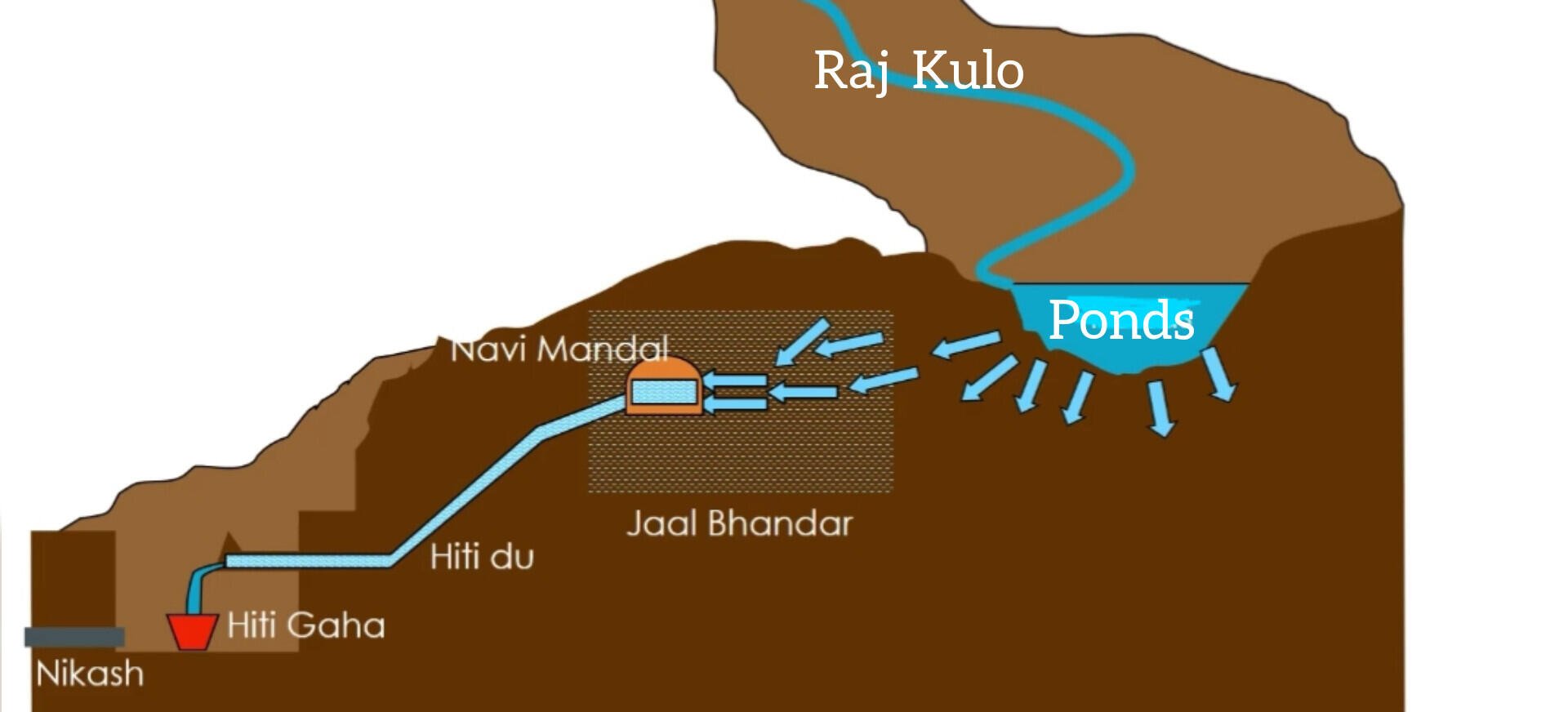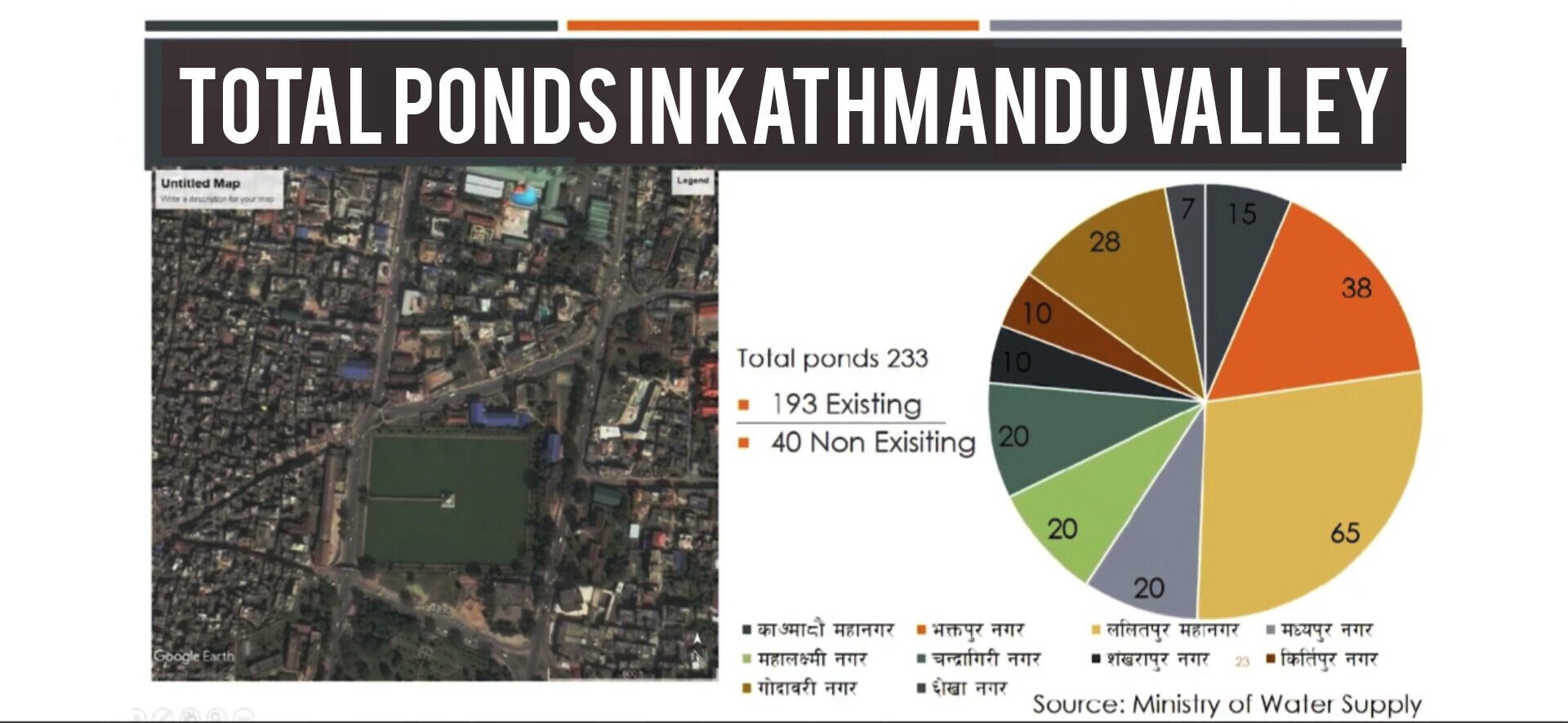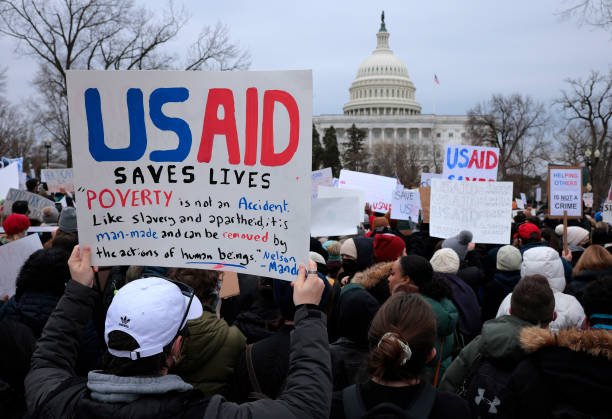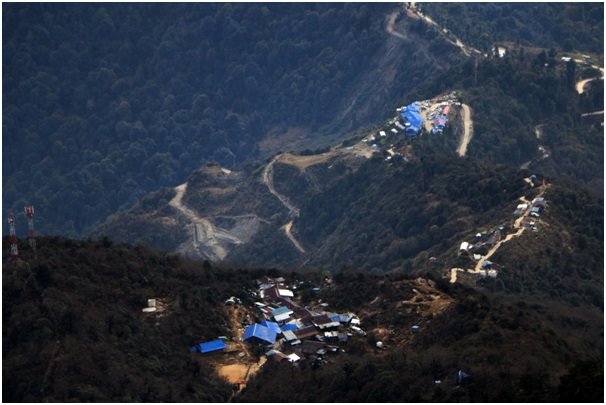Importance Of Ponds in Kathmandu

Kathmandu is well known for its rich cultural heritage and breathtaking landscapes. Amidst the bustling cityscape, there lies a hidden treasure that holds significant hydrogeological importance - The ponds of Kathmandu. These ponds, also known as “Pu-Khuu” and "pokharis" in the local Newari and Nepali languages respectively have played a significant role in the city's water supply system for centuries. Ancient water supply system, the Hiti system consists of different components namely water foundations (hitis), water tanks (jaru hiti), ponds (Pu-khuu), and wells (tu).
The ponds of Kathmandu have a long–standing history and are deeply linked with the valley’s cultural and religious traditions. These pokharies were constructed to fulfill the water demands of the local inhabitants and to facilitate irrigation for agricultural purposes. During ancient times, hitis and wells in the valley were fed through aquifers, Further to maintain a continuous flow of water even during the dry season, networks of Pokharies were built as reservoirs to recharge the aquifers. These pokharies were in turn fed through a water movement channel known as Rajkulo.

Diagram illustrating the importance of Pokhari in Hiti System / Photo Courtesy: Padma Joshi
Currently, numerous ponds in Kathmandu no longer exist primarily as a result of human activities such as over-extraction of groundwater, encroachment upon pond areas, obstruction of water movement channels, and improper management of religious, household, and industrial waste into water bodies. According to the Ministry of Water Supply, there are a total of 233 ponds in the valley. However, out of these, 40 ponds have been completely lost, leaving only 193 ponds that still exist.

Importance of Pokharies besides Cultural and Religious aspects:
Groundwater Recharge
During the rainy season, when the capital receives heavy rainfall, the ponds fill up, ensuring a steady supply of water throughout the year. These ponds act as a recharge area for groundwater, allowing water to infiltrate the soil and replenish the underlying aquifers. The geological characteristics of the areas where pokharies are constructed also contribute to their effectiveness in recharging aquifers. These water-harvesting structures are strategically located in areas with permeable soils or rock formations that allow the efficient infiltration of water. Sudip Shrestha, local resident of Thamel still vividly recalls the unfortunate event of the drying up of wells in the vicinity, caused by the burial of the pond adjacent to the Tridevi temple in Thamel.
Water Storage
Pokharies function as natural water storage systems, especially during the monsoon season when they receive heavy rainfall. They collect and retain water, helping to recharge the groundwater aquifers. This water becomes crucial during the dry season when water availability is limited. The once-existing Tanchal pond, now no longer present, was used for the purpose of irrigating low-lying fields for rice cultivation.
Flood Mitigation
The Kathmandu Valley is prone to flooding, particularly during the monsoon season when intense rainfall occurs. Pokharies help reduce the risk of floods by acting as temporary storage reservoirs for excess rainwater. They can absorb and retain a significant amount of water, preventing it from overwhelming the drainage system and downstream areas. Rani Pokhari effectively mitigated flooding in the lowlands of Baagbazaar and Putalisadak by serving as a water reservoir. Additionally, it prevented water accumulation in the city core by redirecting the overflow from Bhotahiti and Thahiti areas into the pond.
Ecological Balance
These pokharies provide habitats for various aquatic organisms, including fish, amphibians, and water birds. They support a diverse range of flora and fauna, acting as mini-ecosystems within the urban landscape. Taudaha, a natural lake serves as ecological habitat for a significant number of wetland birds.
We are extracting groundwater excessively. This is triggering the groundwater table to fall down every year, threatening the Kathmandu Valley with risks including land subsidence, contamination, and drought. These human activities have disturbed the natural process of groundwater recharge. The key to resolving this issue is to restore the depleted groundwater levels. These ponds of the valley can contribute to groundwater recharge, water storage, flood control, and maintaining water quality. In the face of growing water scarcity challenges in Kathmandu Valley, understanding the roles of Pokharies in recharging aquifers is of utmost importance.
(The author is a B.Sc. Geology student studying at Tri-Chandra College)





Leave Comment